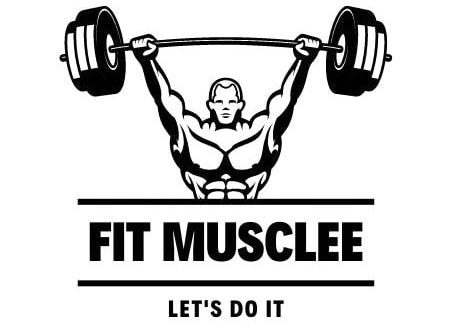Here is your complete guide to shoulder vs military press.
Introduction to Shoulder vs Military Press
When it comes to upper body strength training, two exercises often come up in discussions: the shoulder press and the military press. Both exercises are fantastic for building shoulder strength, but they have distinct differences that can impact your workout routine. Understanding these differences is crucial for fitness enthusiasts who want to maximize their gains and prevent injuries. In this article, we’ll dive deep into the shoulder vs military press debate, exploring their definitions, benefits, and how to incorporate them into your training regimen.
What Are Shoulder vs Military Press?
- Shoulder Press: This is a versatile exercise that can be performed with dumbbells or a barbell. It primarily targets the deltoids but also engages other muscles in the upper body.
- Military Press: This is a stricter version of the shoulder press, typically performed standing with a barbell. It emphasizes core stability and requires a more rigid form.
By the end of this article, you’ll have a clearer understanding of the shoulder vs military press, enabling you to make informed decisions about your training.
Anatomy of the Shoulder
Understanding the anatomy of your shoulder is essential for both exercises. The shoulder joint is one of the most mobile joints in the body and consists of several key muscles:
- Deltoids: The primary muscle group targeted during both presses.
- Trapezius: Assists in stabilizing the shoulder blades during movement.
- Rotator Cuff Muscles: Important for shoulder stability and injury prevention.
Importance of Shoulder Health
Maintaining shoulder health is vital for overall upper body strength. Here are some tips to ensure your shoulders remain strong and injury-free:
- Warm-Up: Always warm up before lifting heavy weights.
- Mobility Exercises: Incorporate shoulder mobility drills into your routine.
- Strengthen Supporting Muscles: Focus on rotator cuff exercises to support shoulder stability.
Overview of Shoulder Press: Shoulder vs Military Press
What is the Shoulder Press?
The shoulder press can be performed seated or standing, using either dumbbells or a barbell. It involves pressing weights overhead, engaging multiple muscle groups in the upper body.
Benefits of Shoulder Press
- Muscle Hypertrophy: Promotes muscle growth in the shoulders.
- Strength Development: Increases overall upper body strength.
- Versatility: Can be modified with different equipment (dumbbells, barbells).
Common Mistakes to Avoid
- Poor Form: Avoid arching your back excessively; maintain a neutral spine.
- Overloading Weights: Start with manageable weights to master form before increasing load.
Overview of Military Press: Shoulder vs Military Press
What is the Military Press?
The military press is typically performed standing with a barbell. It requires strict form and emphasizes core engagement throughout the movement.
Benefits of Military Press
- Core Stability: Engages your core more than the shoulder press.
- Upper Body Strength: Builds strength in deltoids and triceps effectively.
- Functional Movement: Mimics real-life lifting scenarios.
Common Mistakes to Avoid: Shoulder vs Military Press
- Incorrect Stance: Stand with feet shoulder-width apart for better balance.
- Using Momentum: Focus on controlled movements rather than swinging weights.
Key Differences Between Shoulder vs Military Press
Understanding the key differences between these two exercises can help you decide which one suits your goals better.
Form and Technique Comparison: Shoulder vs Military Press
| Feature | Shoulder Press | Military Press |
|---|---|---|
| Grip | Neutral or pronated | Pronated only |
| Stance | Standing or seated | Standing only |
| Core Engagement | Moderate | High |
| Range of Motion | Greater flexibility | Limited by strict form |
Muscle Activation Comparison
Both exercises target similar muscle groups but activate them differently:
- The shoulder press allows for more natural movement patterns, engaging stabilizing muscles.
- The military press focuses on strict form, leading to greater core engagement.
When to Use Shoulder vs Military Press
Choosing between the shoulder vs military press depends on your training goals:
Training Goals
- Muscle Building:
- Use both exercises for balanced development.
- Functional Strength:
- Prioritize military press for core stability.
Skill Levels
- Beginners:
- Start with seated shoulder presses using lighter weights to master form.
- Advanced Lifters:
- Incorporate military presses for added challenge and complexity.
Programming Shoulder vs Military Press in Workouts
Incorporating both exercises into your weekly routine can yield excellent results. Here’s how you can structure your workouts:
Sample Workout Plans
| Day | Exercise | Sets x Reps |
|---|---|---|
| Monday | Shoulder Press | 4 x 8 |
| Wednesday | Military Press | 4 x 6 |
| Friday | Combination | Alternating sets |
Weekly Structure Tips
- Ensure at least one rest day between heavy lifting sessions targeting shoulders.
- Combine with complementary exercises like rows or pull-ups for balanced upper body development.
Best Alternatives to Shoulder vs Military Press
When considering alternatives to the shoulder press and military press, it’s essential to focus on exercises that engage similar muscle groups while providing variations in technique and intensity. Here are some of the best alternatives:
1. Dumbbell Shoulder Press
- Description: A versatile exercise that can be performed seated or standing, allowing for a more natural range of motion.
- Benefits:
- Engages stabilizing muscles.
- Reduces strain on the shoulders compared to barbell variations.
2. Arnold Press
- Description: Named after Arnold Schwarzenegger, this variation starts with palms facing you and rotates as you press overhead.
- Benefits:
- Targets all three heads of the deltoid.
- Enhances shoulder mobility and flexibility.
3. Landmine Press
- Description: Using a landmine attachment, this exercise allows for a diagonal pressing motion.
- Benefits:
- Reduces stress on the shoulder joints.
- Engages the core effectively due to its unique angle.
4. Push Press
- Description: A dynamic movement that combines a slight leg drive with an overhead press.
- Benefits:
- Allows for heavier weights due to leg assistance.
- Improves explosive power and overall shoulder strength.
5. Cable Lateral Raise
- Description: A cable machine exercise that isolates the deltoids.
- Benefits:
- Focuses on the lateral (side) deltoids.
- Provides constant tension throughout the movement.
Best Strategies for Shoulder vs Military Press
When deciding between the shoulder press and military press, implementing effective strategies can enhance your performance and results. Below is a table summarizing the best strategies for each exercise:
| Strategy | Shoulder Press | Military Press |
|---|---|---|
| Foot Stance | Feet shoulder-width apart for stability | Feet together to focus on upper body strength |
| Grip Width | Just outside shoulder-width for better control | Just outside shoulder-width for optimal leverage |
| Core Engagement | Moderate core engagement | High core engagement to maintain stability |
| Weight Progression | Gradually increase weights as strength builds | Start with lighter weights to master form first |
| Range of Motion | Full range of motion for muscle activation | Strict form with controlled range to avoid injury |
| Warm-Up Routine | Dynamic stretches focusing on shoulders | Core and shoulder mobility exercises |
| Rest Intervals | 60-90 seconds between sets | 90-120 seconds for recovery due to intensity |
| Frequency of Training | 1-2 times per week, allowing recovery | 1 time per week, focusing on strict technique |
| Incorporate Variations | Use dumbbells or machines for variety | Experiment with landmine or push press variations |
| Monitor Form | Focus on not arching the back | Ensure elbows stay aligned and avoid flaring out |
By following these strategies, you can maximize the benefits of both the shoulder press and military press, ensuring a balanced approach to upper body strength training.
Common Mistakes to Avoid When Performing Shoulder vs Military Press
Both the shoulder press and military press can be highly effective exercises, but they come with their own set of common mistakes that can lead to injury or decreased effectiveness. Here are some key mistakes to avoid:
1. Poor Grip Width
- Mistake: Using a grip that is too wide or too narrow can affect stability and range of motion.
- Tip: Aim for a grip just outside shoulder-width to maintain proper elbow positioning.
2. Overarching the Lower Back
- Mistake: Arching your back excessively during the lift can lead to lower back pain.
- Tip: Keep your core engaged and maintain a neutral spine throughout the movement.
3. Flared Elbows
- Mistake: Allowing elbows to flare out during the press can strain shoulder joints.
- Tip: Keep elbows close to your body and directly under the barbell or dumbbells for better alignment.
4. Bending Wrists Excessively
- Mistake: Bending wrists during the lift can put unnecessary stress on joints.
- Tip: Maintain a neutral wrist position throughout the movement for better control and safety.
5. Not Engaging Core Muscles
- Mistake: Failing to engage your core can lead to instability and poor form.
- Tip: Focus on tightening your core before initiating the lift to provide better support.
6. Using Momentum
- Mistake: Relying on momentum rather than controlled strength can compromise form and increase injury risk.
- Tip: Perform each rep slowly and deliberately, focusing on muscle engagement rather than speed.
By avoiding these common mistakes, you can enhance your performance in both the shoulder press and military press, ensuring safer and more effective workouts.
Read Also: Lat Pulldown Row Machine Combo.
FAQs about Shoulder vs Military Press
What is better for muscle growth, shoulder or military press?
Both exercises are effective for muscle growth; however, incorporating both can provide a well-rounded approach.
Read Also: Protein Powder vs Pre Workout.
Can I do both exercises in one workout?
Yes! You can alternate between them in a single workout, but ensure you maintain proper form to avoid fatigue-related injuries.
Read Also: Creatine vs Collagen.
How often should I train shoulders?
Aim for 1–2 times per week, allowing adequate recovery time between sessions.
Read Also: Knee Wraps vs Knee Sleeves.
Conclusion
In summary, understanding the differences between the shoulder vs military press can significantly impact your training outcomes. Both exercises offer unique benefits and target similar muscle groups but require different techniques and engagement levels. By incorporating both into your routine based on your fitness goals and skill level, you can achieve optimal results while maintaining shoulder health.
Read Also: Foods That Increases Hemoglobin.
Whether you choose to focus on hypertrophy or functional strength, mastering these lifts will undoubtedly enhance your upper body performance. Happy lifting!
Read Also: Pull Ups vs Pull Downs.

